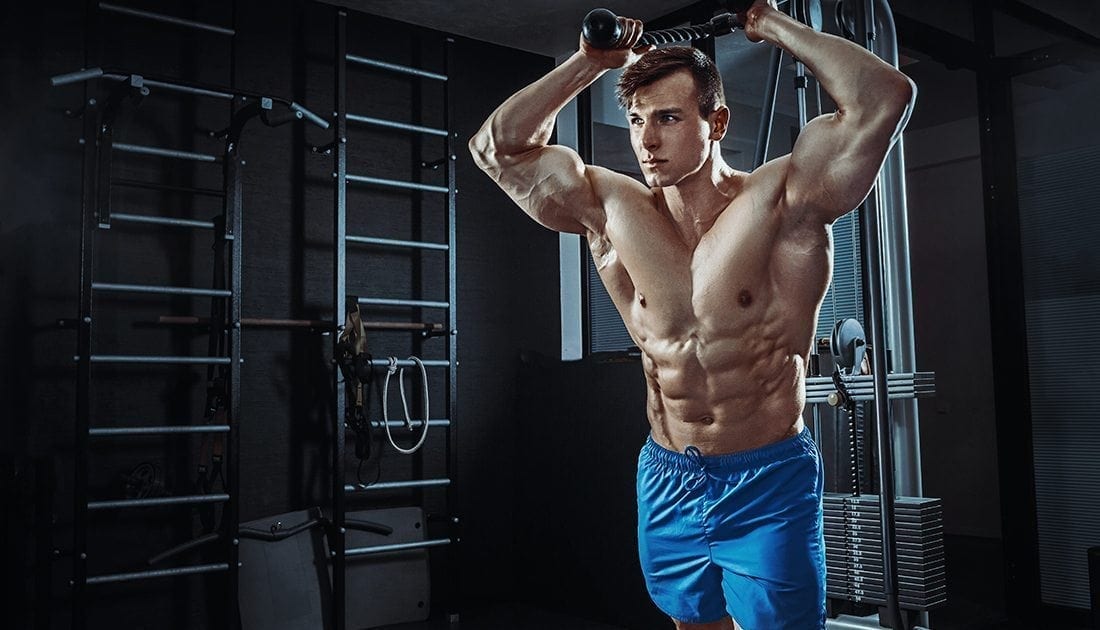Typical resistance-training recommendations are as follows:
- Train a group of muscle intensely and don’t train it again for another 48-72 hoursOR
- Assault one muscle group with everything you have and don’t train it again for another 5-7 days, or until you’re not sore.
No doubt you’ve heard these same recommendations, or something very similar to them, at one point or another in your lifting career. The reality is, neither of these recommendations hold much water and these “rules of lifting” may actually be holding you back from bigger and better muscle gains.
What if you could actually work the same muscle group(s) on consecutive days and have it not inhibit recovery, but actually promote growth?!
You’d probably think we were crazy.
Well, there’s a little something called feeder workouts, and it may be just what you need to bring up those lagging body parts once and for all!
What is a Feeder Workout Set?
Feeder workouts are “mini” workouts completed completely separate from your regular workout. In other words, the day after a heavy lifting day, you do a separate workout later that day or, ideally, the following day targeting those exact same muscles you hit on the previous day but for only 3 sets using very light weight and lots and lots of reps.
For example, let’s say on Monday you trained your pushing muscles (i.e. chest, shoulders, and triceps). Then, on Tuesday, before or after your normal training routine you do your feeder workout for chest, shoulder, and triceps. This feeder workout would contain primarily isolation exercises that allow you to really concentrate on the target muscle using very strict form and high reps.
An example feeder workout for your push muscles would be:
- Pec Dec = 3 sets, 50-100 reps
- Lateral Raise = 3 sets, 50-100 reps
- Dumbbell Skull-Crushers = 3 sets, 50-100 reps
Now, jumping right out of the gate performing 50-100 reps in a single set, even using very light weight is incredibly taxing both mentally and physically -- the burning sensation that sets in during feeder workouts is unlike anything you’ve experienced before!
The goal of these feeder workouts isn’t to pulverize the muscle and blast it into oblivion. These mini workouts should be looked at low intensity pump work, with the goal being to drive as much nutrient-rich blood into the muscles you trained the previous day. Remember muscle grows when stimulated, not annihilated, no matter what the gym bros tell you!
Why Feeder Workouts Work?
-
Extended Protein Synthesis
Feeder workouts prolong, or extend, the amount of time increased muscle protein synthesis occurs in a muscle group. Normally, when a muscle group is trained, protein synthesis is elevated for roughly 24 hours and returns to normal levels around the 36-hour post training mark.
By performing another mini workout 24 hours after the first one, you prolong the increased protein synthesis occurring in your muscle by another 12-24 hours.
The catch here, is that growth will only occur if you’re fueling properly. You’re only going to grow and promote repair and recovery if you’re consuming ample protein and eating at a caloric surplus.
-
Improved Mind-Muscle Connection
Simply put, the human body gets better at things it does frequently. If you want to get better at pull ups, you need to start doing pull ups more often. The reason for this is that you’re increasing training volume, which your muscles adapt to by growing bigger and stronger, but in addition to getting stronger, you also establish a stronger mind-muscle connection, or an increased “awareness” of which muscle should be working during a given exercise.
Feeder workouts are especially great if you struggle feel certain muscle groups firing during a lift. For example, don’t feel your lats working while doing pull ups (along with the other muscles of the back), performing a feeder workout the following day of straight-arm lat pulldowns may strengthen your mind-muscle connection to your lats, which translates to better lat recruitment during your subsequent pull up workouts leading to better workouts and bigger gains!
-
Shoring up Weaknesses
Following your heavy lifting day, the trained muscles are incredibly responsive to less intense or traumatic training methods, i.e. light weights, high reps. This is great for bringing up lagging muscle groups that may be holding back your heavier compound movements.
For example, if you struggle with the lockout portion of a bench press or overhead press, performing lighter weight, higher rep tricep work the day after your heavy presses, using very strict form while focusing on the contraction, will bring strengthen your triceps and translate to better performance in your heavier compound lifts.
Feed to Grow Muscle!
Feeder workouts are rarely discussed when discussing muscle growth. However, they represent an incredibly effective way to increase training volume without overtaxing your central nervous system (CNS) or muscles the way that high volume, high frequency heavy lifting programs can. Remember to keep the feeder workouts light and high rep but limit each exercise to 3 sets and only ONE exercise per muscle group. Coupled with a proper muscle-building diet and supplements for muscle growth, you’ll be astounded at how quickly your weak points become your best assets, all thanks to feeder workouts!
Post your feeder workouts on Instagram and tag us @steelfitusa with the hashtag #IAMSTEELFIT for a chance to be featured!

